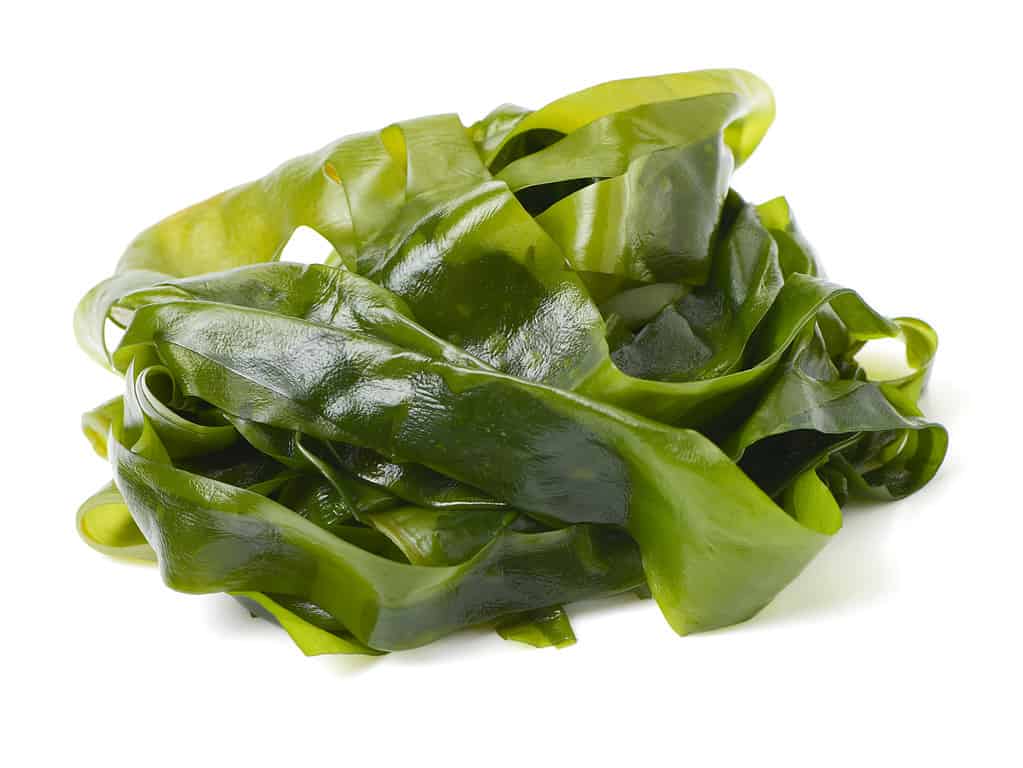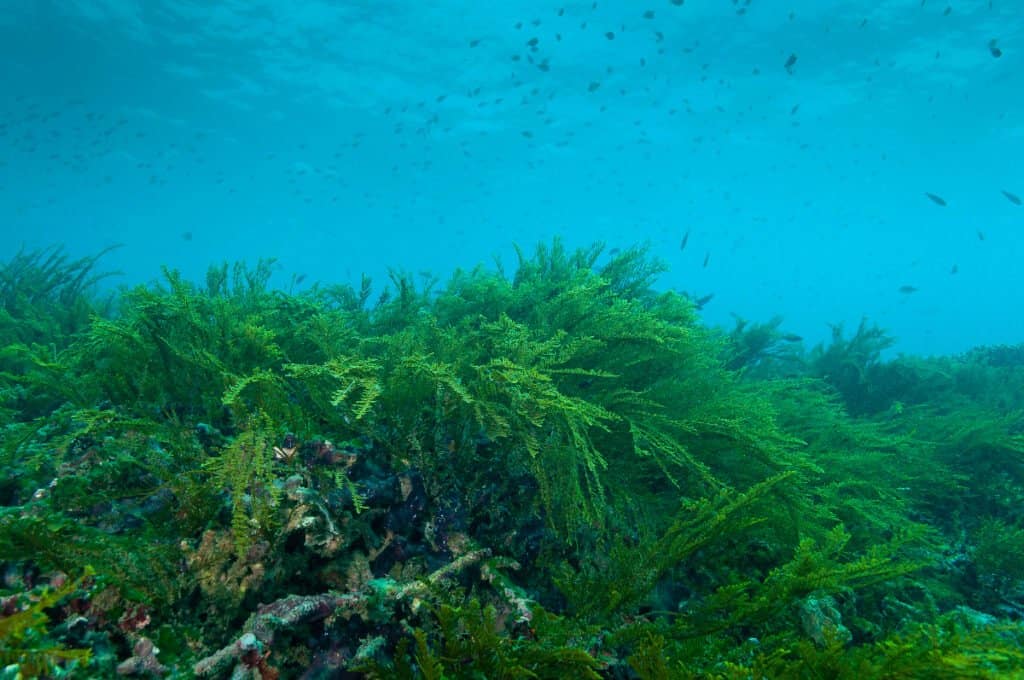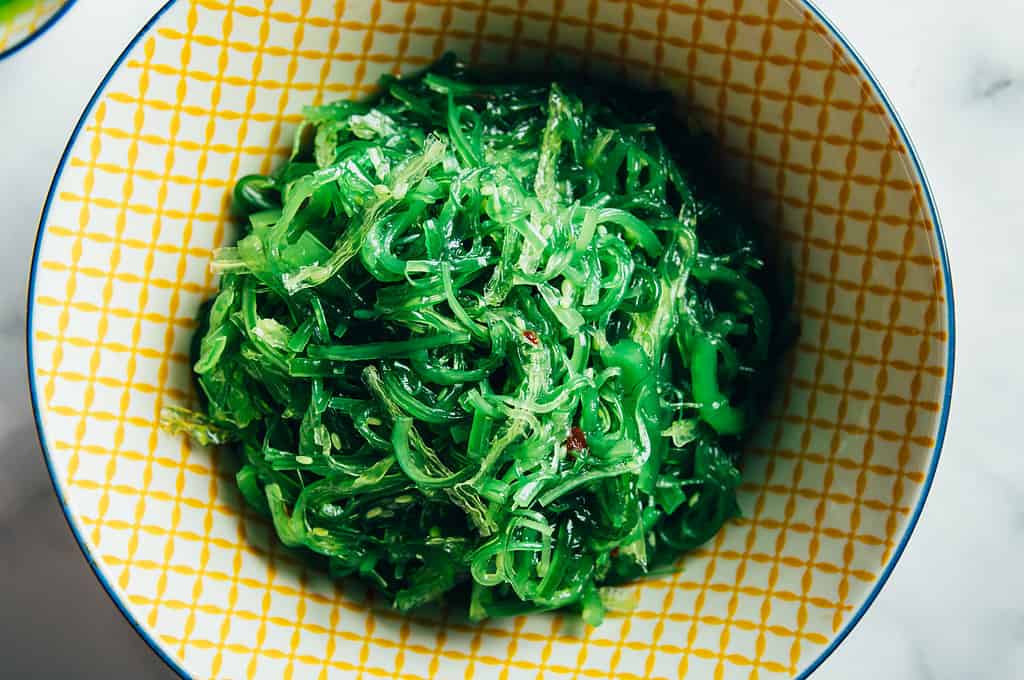Kelp and seaweed might seem exactly the same, but they differ in several ways. From size to color and habitat to uses, this article will uncover the kelp vs. seaweed seven key differences. Before we jump in, it’s worth recognizing people often use kelp and seaweed interchangeably to describe all underwater sea plants. For example, in North America, kelp usually refers to all species of brown seaweed, but this isn’t correct.
Differences Between Kelp and Seaweed
Both kelp and seaweed are marine algae species. However, kelp is a subspecies of seaweed. That means all kelp is seaweed, but not all seaweed is kelp. The key differences between kelp and seaweed are habitat, size, color, and uses. Let’s look at the differences in greater depth.
What Is Seaweed?
Seaweed is an overarching name for marine macroalgae, a type of large algae that lives in water. There are more than 10,000 different seaweed species that draw nutrients from water rather than soil, like land plants we’re more familiar with. However, like land plants, they absorb sunlight to photosynthesize.

Seaweed color depends on how much light it absorbs through photosynthesis. Seaweeds closer to the water’s surface are green.
©iStock.com/chengyuzheng
What Is Kelp?
Kelp is the largest subgroup of seaweed. It’s a fixed type of seaweed that knots itself to a spot and spreads into an underwater forest. Other seaweed species can float, but kelp always fixes to a spot.

Kelp species are chiefly brown.
©Bjørn Christian Tørrissen, CC BY-SA 3.0, via Wikimedia Commons – License
Kelp vs. Seaweed: Size
Seaweed size is as varied as its species range. They range from seaweeds just a few inches long to seaweeds over 150 feet and more.
In contrast, kelp species are large. For example, bull and bladder kelp reaches 150 feet long. At this length, they weigh hundreds of pounds.
Kelp vs. Seaweed: Color
Color is a big differentiator between seaweed and kelp.
Kelp species are chiefly brown. Shades range from pale tan to deep chocolate brow; some species are tinged with deep green.
Because seaweed encompasses many different species, including kelp, it has a wider range of colors, and this is how experts classify seaweed. The color classes are brown, red, and green. Kelp is in the brown seaweed category.
Here are the seaweed classifications:
- Chlorophytes: Green, they get color from chlorophyll.
- Rhodophytes: Red, they get color from chlorophyll and accessory pigments, red phycoerythrin, and blue phycocyanin. A combination of these three colors creates a range from bright blue to deep burgundy red.
- Ochrophytes or Phaeophytes: Brown, they get color from carotenoid pigments, including fucoxanthin and phlorotannin. Kelp is a species of brown seaweed.
Seaweed color depends on how much light it absorbs through photosynthesis. Seaweeds closer to the water’s surface are green. It’s because some colors filter out when light passes through water’s differing wavelengths. Seaweeds at greater depths need different pigments to carry out photosynthesis using the fewer light wavelengths able to make it through to deeper depths.
Green seaweed is a shallow seaweed species, whereas red and brown seaweed, including brown seaweed kelp, live at a greater distance from the sun.
Willian Harvey was the first botanist to classify seaweed into color groups in the 18th century. It’s still in use today.
Kelp vs. Seaweed: Environment
Seaweed grows in diverse environments, including shallow or deep oceans, rivers, lochs, and lakes in salt or freshwater. Certain species, like Ascophyllum nodosum, grow in the intertidal zone, where it’s covered at high tide but uncovered at low tide.
Kelp forests such as Laminaria digitata are common in deep temperate saltwater such as the North Pacific Ocean and along rocky coastlines where they can anchor to rocks. Kelp doesn’t grow in intertidal zones.
Kelp is always fixed to a spot, whereas seaweed species are either fixed like kelp or free-floating in great clumps.

is a type of seaweed and the largest unicellular organism!
©Jesus Cobaleda/Shutterstock.com
Biodiversity Systems
Both seaweed and kelp contribute to vast ecosystems and biodiversity.
Kelp chiefly grows in large, dense forests that create ecosystems for marine animals. A sea kelp forest provides nutrients, habitats, and safety for fish, seahorses, invertebrates, and mammals, much like a land forest does for creatures like squirrels, mice, and deer.
Kelp forests grow fast and produce so many nutrients they are similar to rainforests. Additionally, kelp forests cycle water nutrients, purify water and prevent coastal erosion.

Fish swimming in an underwater kelp forest.
©iStock.com/Shur_ca
Kelp vs. Seaweed: Health Benefits
Seaweed and kelp are edible and provide human health benefits.
Kelp is more plant-like than other types of seaweed, and as a result, experts think it may contain more nutrients for humans. It’s rich in vitamins and contains iodine, which is essential for good thyroid health. In addition, high calcium content provides bone and teeth support.
Kelp also contains cancer-fighting antioxidants. Studies indicate kelp may help fight obesity by reducing fat absorption. This is good news in the fight against poor heart health and diabetes.
Seaweed includes a vast range of plants filled with nutritional benefits. For example, it contains prebiotic fiber for gut flora health, boosts the immune system, and produces antioxidants to fight free radicals that may cause cancer.
Kelp vs. Seaweed: Uses
Seaweed, including kelp, is a helpful gardening aid because it’s full of nutrients beneficial to plant life. Plant fertilizers made from seaweed are widely available and are less smelly than animal manure.
Seaweed or kelp mixed with fish derivatives provide all-around plant fertilizers capable of feeding fruit, vegetables, flowers, and trees without damaging the environment.
Seaweed vs. Kelp: Flowers
Seaweed and kelp do not produce flowers. They are not plants like terrestrial weeds but belong to a group called protists that reproduce via spores.
Can You Eat Seaweed and Kelp?
Yes, you can eat both seaweed and kelp. They are both tasty ingredients in worldwide cuisine, especially Japanese and Chinese dishes.
Good ways to eat seaweed and kelp are:
- Salad: Slice and add to a basic salad for extra flavor and texture.
- Seasoning: Dry powdered seaweed and kelp create an umami flavor.
- Broth: When it’s simmered and cooked with beans, seaweed, and kelp, add lots of rich flavor without salt or sugar.
- Sushi: Red seaweed is a popular nori used to wrap sushi rolls.
- Dried: Dried crispy seaweed is salty and tasty without added seasoning.
Just a warning: it’s not a good idea to grab seaweed from the beach to cook up. In some countries, it’s illegal to harvest seaweed without a license, and growing near sewage outlet pipes may contaminate it.
Most people eat farmed seaweed. It’s available in health food shops and is becoming more popular in mainstream stores.
But it’s not only humans that eat seaweed. Other animals that rely on seaweed include shrimp, turtles, krill, sea urchins, manatees, clownfish, and Orkney sheep.

You can eat both seaweed and kelp. They are both tasty ingredients in worldwide cuisine, especially Japanese and Chinese dishes.
©iStock.com/Manuta
Environmental Importance
Both kelp and seaweed are important environmental contributors. Not only do kelp forests and seaweed clumps create habitats and food for sea creatures, but marine algae also promote water health and fight climate change.
Macroalgae, a type of seaweed, is able to store vast amounts of carbon from the atmosphere, and kelp, with its rapid growth rate, can absorb huge carbon amounts and store it underwater.
Scientists think seaweed is more efficient at storing carbon than trees. This means seaweed and kelp are hugely important to our planet. Kelp farmers help protect ocean ecosystems and our endangered coral reefs and help fight climate change.
Are Kelp and Seaweed the Same Thing?
Kelp and seaweed are not the same thing. Seaweed is an overarching term that encompasses over 10,000 species. Kelp is one of the brown seaweed species.
Although the terms are used interchangeably to describe brown seaweed, they are different. The main contrasts are color, habitats (kelp live in saltwater, seaweed species in salt or freshwater), and size.
However, both are important species for our planet. They both create ecosystems that feed and shelter marine animals, they both store carbon from the atmosphere, and they are both tasty, nutrient-packed human foods.
The photo featured at the top of this post is © Ggerdel - Foto de: Gustavo Gerdel, CC BY-SA 4.0, via Wikimedia Commons – License / Original
Thank you for reading! Have some feedback for us? Contact the AZ Animals editorial team.






